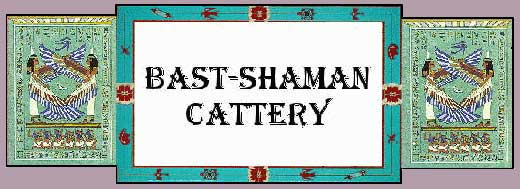
|
|

|
|
|
|
|
Himalayan Breed DescriptionCreated originally by crossing Persians and Siamese, the Himalayan exhibits the best features of both breeds. From the Persians they receive their beautiful long-hair coats, cobby (short and stocky) body, flat face, round eyes, wide head, and gentle, loving disposition. The Siamese ancestry has give them the distinctive pointed colour pattern, intensely blue eyes, a chirpy voice, sharp intelligence which makes them more enterprising, and a tendency to bond with one person as the center of their attention. Some mistakenly refer to Himalayans as long-haired Siamese. This is completely inaccurate since the Balinese is actually the long-haired version of the Siamese. Others say that Himalayans are Persians with Siamese colouring. While a little closer to the truth, this, too, is somewhat off the mark since their pointed- pattern is found in other animals (such as goats and rabbits) and is referred to as a "himalayan" pattern rather than a "siamese" pattern. Technically, Himalayans are classified as a colour division in the Persian breed. As such, they are expected to match Persians in general appearance and build. Himalayans breed true. That is to say, a Himalayan mated to another Himalayan will produce all Himalayan kittens every time. Since Himalayans are considered to be Persians, "outcrossing" to other colour divisions within the Persian breed is not only allowable but also considered desirable to maintain and enhance the Persian-type features within the Himalayan line. The crossing of a Himalayan with a non-pointed Persian will produce all non-pointed kittens who carry the recessive gene for the Himalayan colour pattern. These offspring are referred to as ColourPoint Carriers (CPCs) which, when mated to a Himalayan or to another CPC will produce some Himalayan kittens and some non-pointed kittens. CPCs with outstanding Persian traits are considered invaluable to Himalayan breeding programs. The coat pattern of the Himalayan is what makes it so distinctive. Colouring is restricted to the extremities (face/mask, ears, legs, and tail) while the body remains white. This is referred to as a "pointed" pattern. There are, at present, 20 different possible colours (discussed elsewhere) which are generally accepted, to some degree, by breeders and fancier organizations. Continued efforts go into refining existing colours and developing new ones. As a member of the Persian breed, Himalayans have long hair. Consequently, they are not well adapted to the outdoors because their coats are prone to getting tangled with debris. Even indoors, they require a considerable amount of on-going grooming to keep their coats in good shape. A solid body with broad rump and shoulder is the standard for Himalayans. Complementing the cobby body are thick, stubby legs and a fluffy brush of a tail. The short, rounded head should have a good bit of distance between the small ears, and the eyes should be a brilliant blue. The characteristic flat face of the Persian should also be present with Himalayans. Like other Persians, Himalayans are slow to mature sexually. In general, females are not of breeding age until they are 9 to 12 months of age, and males may go as long as 18 to 20 months before they can mate. Litter sizes tend to be 3 or 4 kittens. Because the babies have such large heads, mother Himalayans can experience difficulty with births and some need assistance during the birthing process. As far as temperament goes, Himalayans are the perfect blend of Persian and Siamese, falling somewhere between the extremes of the two. They are playful without being overly rambunctious. They are extremely loving, and often develop a special attachment to a single individual, following him/her around like a puppy. |
|
|
If you have any questions please email us at bastshaman@hotmail.com |